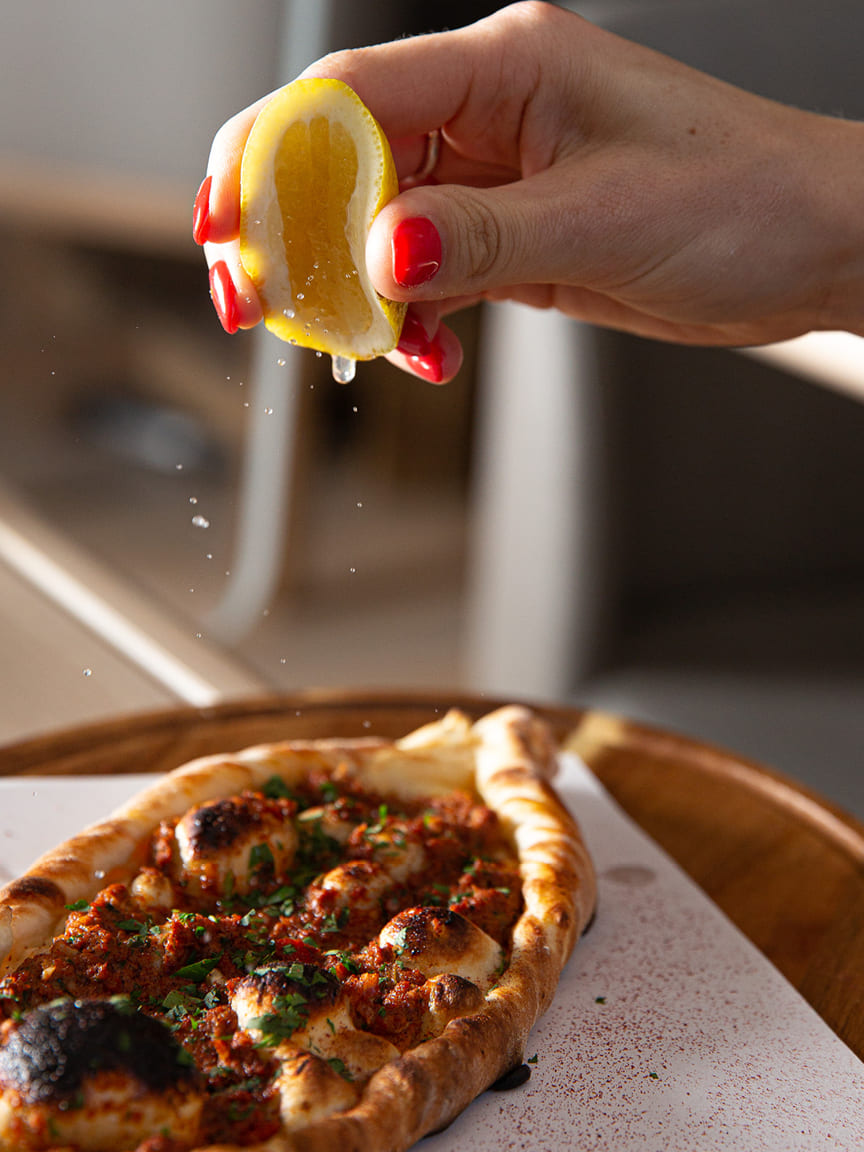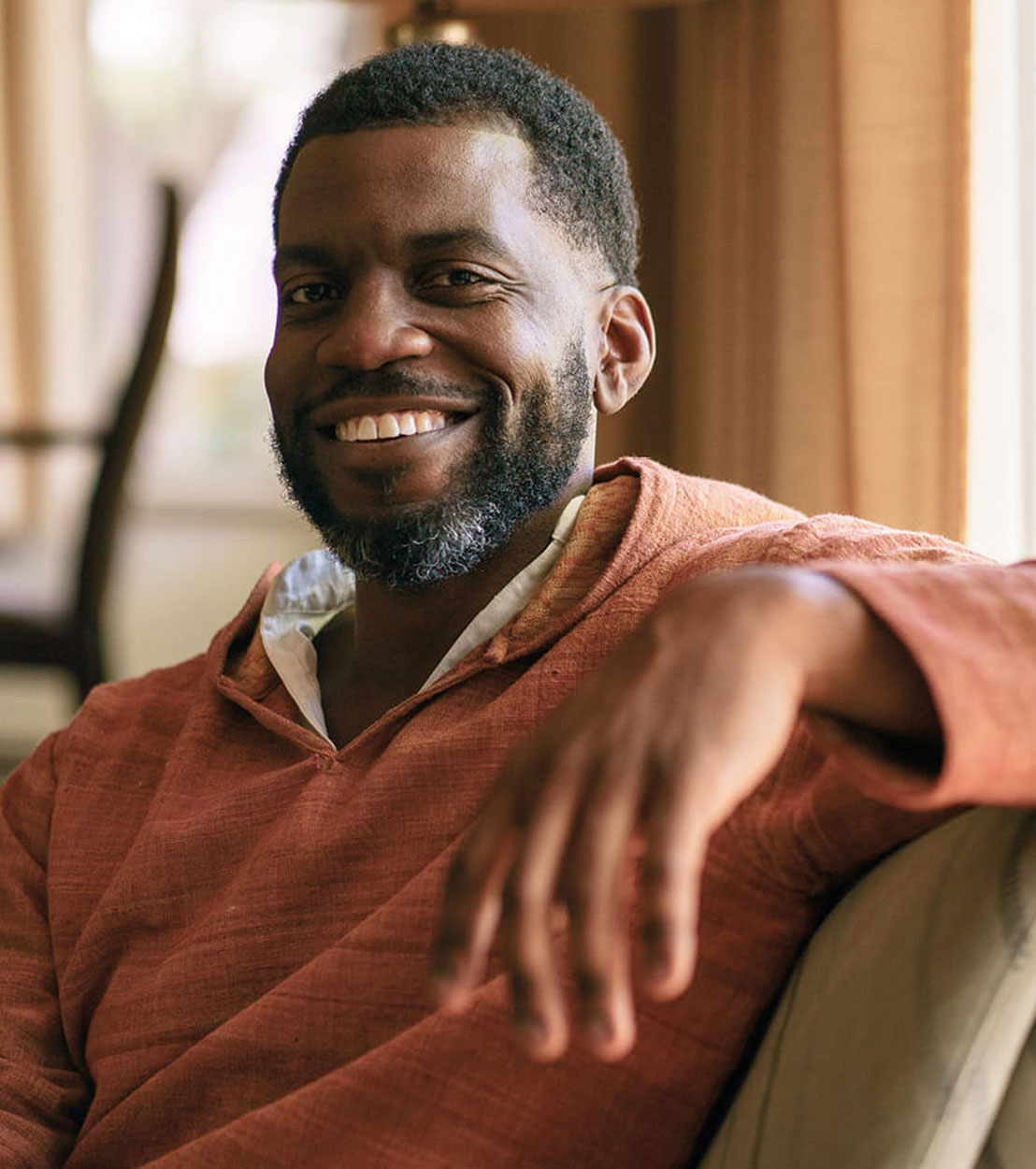
FOOD FOR THOUGHT
How do recipes, passed on from generations and traveling across continents, help preserve cultures, share histories, and deal with loss and love, wonders Lilah Raptopoulos
A few years ago, I tried a restaurant in New York called Iris. It was billed as Greek and Turkish cuisine, which intrigued me, given the historical animosity between the Greeks and Turks. My father is from Greece, and my mother is Armenian, from Massachusetts, and their parents fled from Anatolia, a region that is now in Eastern Turkey, in the early 1900s.
Even a hundred years later, the relationship between many Greeks and Turks is fraught. The relationship between Armenians and Turks is worse. The idea that a restaurant in New York would fuse Greek and Turkish cuisine? I wanted to find out.
Before the meal at Iris, I sat in the front lounge with its Michelin-starred executive chef, John Fraser. I admitted that billing a restaurant as Greek and Turkish seemed bold. He told me that he had a strong affinity for both countries and both cuisines, and believes food has the power to blur borders and bring people together. He said, “Also, I always feel when I eat Greek food that I want it to be a little more Turkish, and when I eat Turkish food I want it to be a little more Greek.”
I bristled at this answer, and he could tell. Food unites, of course, and nourishes, too, but it also holds memories, and longing. It can represent survival and pain. My eyes narrowed, unconvinced. “Look,” he said, smiling, “Just try the food. Then decide what you think.”
The food came: octopus, charred outside and juicy inside with Antep chili, roasted eggplant with yellow raisins, lamb chops marinated with mastika, sweetbread kokoretsi. The bartender made a cocktail with tsipouro, a pure, unaged brandy that’s rare in America but popular with my family in Greece. As plates crowded the table, I started to feel emotional. The food wasn’t stereotypical Greek-American cuisine. It was special. And there was something strangely familiar about it. I couldn’t put my finger on why.
That night, walking home from the subway, I called my dad, and yelled the whole story at him. “What happened?!” I said. “Why was it so good?”
“It’s Anatolitiki Kouzina,” he told me, “Anatolian cuisine. When this chef fused Greek and Turkish food, he accidently started cooking like your grandmother.”
This epiphany, like most epiphanies, felt simultaneously obvious and profound. Of course! These cultures were neighbors for centuries, before and throughout the Ottoman Empire: Greek, Armenian, Jewish, Kurdish, Assyrian and Turkish tribes all lived in the same villages and cities, divided by neighborhood. It wasn’t always harmonious; in fact, it was often fraught. But locally, interpersonally, they were entwined.
In the ugly wake of the empire’s fall, Anatolia’s displaced cultures became diasporas, spreading around the world and adapting their cuisines to new lands. It’s why my grandmothers cooked so similarly, on two different continents. They couldn’t communicate much verbally, but made almost the same kefte, the same dolma. I’ve been chasing that taste for years. I found some of it at Iris, but I wanted to find more.



Iris in New York, helmed by Michelin-starred executive chef John Fraser, serves a menu that blends Greek and Turkish culinary traditions with a modern twist
Origin story
Last September, I chased that taste to Istanbul, to interview Greek, Armenian, Jewish, Coptic and Turkish cooks and food researchers dedicated to this work. One of them was Maksut Aşkar, the Turkish chef of Michelin-starred restaurant Neolokal. Located in Salt Galata, one of the city’s most innovative contemporary art centers, Neolokal’s goal is to elevate Anatolian cuisine. Aşkar wants the food of his homeland to not just be considered home cooking, but worthy of fine dining, too.
We sat on the patio of his restaurant – Aşkar, his assistant, our Turkish fixer Çansu, my boyfriend Larry and myself – so the Istanbulites could smoke. Aşkar had celebrity chef vibes: tall, wood beaded bracelets, more new-world chef than old-world cook. He told me he calls his food Anatolian cuisine instead of Turkish or Ottoman deliberately, because the land was influenced by many cultures, not just one.
Aşkar reminded us that Anatolia lies alongside, and overlaps with, Mesopotamia – the literal cradle of civilization. “Americans don’t know where Anatolia is, but this geography has been the motherland for all civilizations,” he said. “The history of the wine they drink? It comes back to Anatolia. The bread they eat every day? Back to Anatolia. The beer they drink every day? Back to Anatolia.”
I asked why he was so committed to that word. “I thought it wouldn’t be right to dedicate the restaurant to a nation,” he said. “Better to dedicate it to a geography, because the geography has always been here. More than 70 civilizations have inhabited these lands. Your ancestors used to live in these lands. People shift because of politics, because of the idiocracy of borders. But no matter what, Anatolia has always been a fertile mother for the people who live here.”
Six hours later, we returned to his patio for dinner. We sat at a table that overlooked the Bosphorus river and the mosques along the Golden Horn. We ate a nine-course meal: braised eggplant, ishli kofte cased in bulger, pulled beef in filo. Çansu took a bite of artichoke, locked eyes with me, and said it was changing her life. They poured me a glass of golden white wine from Tokat, called Vinolus Narince. My Armenian grandfather is from Tokat. That region, to me, is a fantasy, barely real. I took a photo of the bottle to send to my family. “Tokat, it exists,” I wrote. “Still. Not just in memory. It makes wine!”
Aşkar invited us to lunch the following day. His mother was in town, and would be cooking his favorite meal for the staff. The dish was makloubeh, which has also traveled through empires, an ancient Levantine occasion course that layers rice, meat, broth and vegetables. It’s popular in Iraq, Jordan, Palestine. Aşkar is from the Hatay province in southern Turkey, near the border with Syria, where they also cook makloubeh, slightly differently, with different ingredients, based on a different terroir.
The next day, Larry and I showed up, and tucked in amongst the cooks. Aşkar’s mother took out two big metal bowls, flipped them, and lifted each ceremoniously to present perfect piles of pilaf covered in cubes of soft lamb. She spooned pine nuts on both, browned in butter, which soaked right through. The staff took photos, as if these makloubeh mounds were famous. Then the mother, now our mother, doled spoonfuls out to everyone. Larry and I sat down to taste our pile. It tasted like the food at Iris, and the food in my grandmothers’ homes. It was warm, and the steam filled our mouths and reached somewhere deep, an ancient land I can’t quite see, but can sometimes taste. Aşkar’s mother smiled at us from across the room.
I haven’t been back to Iris. Part of me wants to keep these moments in my memory, unspoiled. The other part wants to bring my father, and say, “What is this? What about this?” in the hopes we can figure it all out. We never will, of course, figure it out. But the chase feels right.
Lilah Raptopoulos is writing a book that retraces the food traditions of her family’s multigenerational journey from Anatolia.
“Of course, food unites us around a table – it nourishes. But there is so much more. Food holds memories and longing, and stories of survival and pain”
Neolokal in Istanbul strives to elevate Anatolian cuisine with dishes such as Revani with Rose. Middle, Chef Maksut Aşkar, the Turkish chef of Michelin-starred restaurant Neolokal in Istanbul, and a dish of trit and katmer of pulled beef cooked in duck broth, filo pastry with pistachio, colorful yogurt tarator. Chef John Fraser of Iris restaurant in New York plating a turbot dish
Photography ©Liz Clayman, Nitzan Keynan, Josha McHugh, Colin Clark, Iris, Can Mete, Neolokal
We recommend
ORIGIN STORY
With High on the Hog, Stephen Satterfield looks at US history through the lens of Black food to weave richly layered critical narratives. He speaks with Jordan Mackay
NATIVE WISDOM
With Indigenous cuisine experiencing at last a much-needed renaissance across the US, Stephanie Gravalese meets three chefs leading conversations around the movement’s ties to cultural preservation and culinary innovation
DOORS OF PERCEPTION
John Irwin delves into the art of wine talk and explores how our individual cultural backgrounds influence how we see the world – and taste it
NEW PERSPECTIVES
Alicia Towns Franken, executive director of nonprofit organization Wine Unify, talks to Kyla Marshell about race and diversity (or lack of) in the wine business








